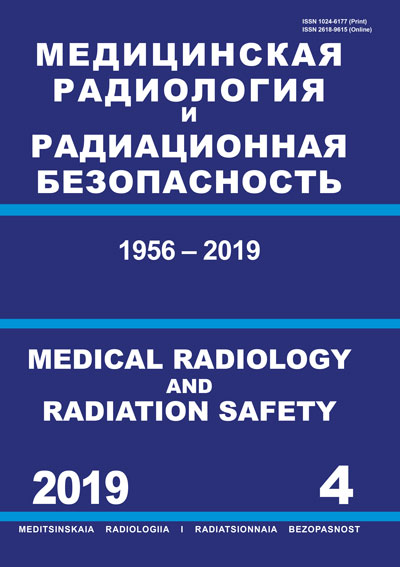CSCSTI 76.03
CSCSTI 76.33
Russian Classification of Professions by Education 14.04.02
Russian Classification of Professions by Education 31.06.2001
Russian Classification of Professions by Education 31.08.08
Russian Classification of Professions by Education 32.08.12
Russian Library and Bibliographic Classification 51
Russian Library and Bibliographic Classification 534
Russian Trade and Bibliographic Classification 5708
Russian Trade and Bibliographic Classification 5712
Russian Trade and Bibliographic Classification 5734
Russian Trade and Bibliographic Classification 6212
11 patients had unilateral stenting, 3 patients had bilateral ureteral stenting, nephrostomy was performed in 9 patients and 1 woman had an ureteral stent installed on one side, nephrostomy was performed on the other side. In 70.8 % (17) patients, the irradiation course was performed without interruption. From 5 to 3 weeks (due to cystitis, endometritis, anemia). In 2 patients, it was not possible to complete the full course of radiotherapy because of the intractable effects of pyelonephritis, they were operated on. In the observation period up to 77 months (average observation time 29 months) 16 patients are alive, 12 of them are without signs of disease recurrence. In 6 patients, the natural passage of urine was restored. In 4 patients, the nephrostomy was replaced with a ureteral stent. In 3 patients with ureteral stents they are replaced. Three patients remain with nephrostomy. Eight women died from the progression of the underlying disease, of these, 6 patients are with recurrent cervical cancer in the pelvis. Note that in all 6 patients, as a result of the irradiation, a pronounced palliative effect was achieved in the form of relief of pain and bleeding.
radiotherapy, cervical cancer, locally advanced and recurrent, hydronephrosis, urine diversion
Введение
Лучевая или химиолучевая терапия является возможной опцией для больных раком шейки матки (РШМ), начиная со стадии IB2 и единственным методом лечения для пациенток с IIIB стадией, у которых первичная опухоль классифицируется как Т3b [1, 2].
Все клинические случаи РШМ с наличием гидронефроза, обусловленного сдавлением мочеточника опухолью, относят к IIIB стадии по классификации FIGO и категории Т3b по системе TNM [3].
1. Clinical recommendations. Cervical cancer. The association of Russian oncologists. 2017. ID: KP537 [cited 2018 Dec 27] Available from: http://cancerlink.ru/cancer/clinical-guidelines-oncology-2017/clinical-guidelines-aor-2017 . (Russian).
2. NCCN (National Comprehensive Cancer Network, OCT 2017) (version 1.2019) Available at nccn.org. [cited 2018 Nov 05]
3. TNM classification of malignant tumours. Sobin LH, Gospodarowicz MK, Wittekind C, eds. 7th ed. NY: Springer-Verlag, 2010. 256 p.
4. Kaprin AD, Titova VA, Kostin AA, Rerberg AG. Improving the Diagnosis and Treatment of Retention Disorders of the Upper Urinary Tract in Patients with Stages IIB-III cancer of the Cervix Uteri. Cancer Urology. 2012;8(2):98-101. DOI:https://doi.org/10.17650/1726-9776-2012-8-2-98-101. (Russian).
5. Rose PG, Ali S, Whitney CW, Lanciano R, Stehman FB. Impact of hydronephrosis on outcome of stage IIIB cervical cancer patients with disease limited to the pelvis, treated with radiation and concurrent chemotherapy: A Gynecologic Oncology Group study. Gynecol. Oncol. 2010; 117(2):270-5. DOI:https://doi.org/10.1016/j.ygyno.2010.01.045.
6. Goklu MR, Seckin KD, Togrul C, Goklu Y, Tahaoglu AE, Oz M, et al. Effect of hydronephrosis on survival in advanced stage cervical cancer. Asian Pac J Cancer Prev. 2015;16(10):4219-22. DOIhttps://doi.org/10.7314/APJCP.2015.16.10.4219
7. Beckta JM, Carter JS, Wan W, Chafe WE, Abayomi OK, Proper MA, et al. Urinary Diversion in the Management of Locally Advanced Cervical Cancer Facilitates the Use of Aggressive Therapy without Adversely Effecting Overall Treatment Time. EC Gynaecology. 2016;3(1): 225-31.
8. Mankad M, Mishra K, Desai A, Patel S. Role of percutaneous nephrostomy in advanced cervical carcinoma with obstructive uropathy: a case series. Indian J Palliat Care. 2009;15(1):37-40.
9. Chepurov AK, Zenkov SS, Mamaev NE, Pronkin EA. Prolonged drainage by ureteral stents: current state of the issue and prospects. Andrology and Genital Surgery. 2009;(2):44-8. (Russian).
10. Pecorelli S. Revised FIGO staging for carcinoma of vulva, cervix, and endometrium. Int J Gynec Obstet. 2009;(105):103-4.
11. Kaprin AD, Titova VA, Kreynina YuM, Kostin AA. Urological complications in oncologic practice: diagnosis, interventional and conservative correction. Moscow; 2011. 168 p. (Russian).
12. Protein-energy deficiency in cancer. In: Baranovsky AYu, editor. Dietetics: Manual 5th edition. St. Petersburg: Piter; 2017. p. 868-74. (Russian).
13. Kurpeshev OK, Mardynsky YuS. Basic principles and methods of radiomodification in radiotherapy. In: Kaprin AD, Mardynsky YuS, editors. Therapeutic Radiology. National leadership. Moscow: GEOTAR-Media; 2018. P. 89-128. (Russian).
14. Brotherhood H, Lange D, Chew BH. Advances in ureteral stents. Transl Androl Urol 2014;3(3):314-9. DOI:https://doi.org/10.3978/j.issn.2223-4683.2014.06.06.
15. Boyko AV, Korytova LI, Oltarzhevskaya ND, editors. Targeted drug delivery in the treatment of cancer patients. Moscow: Special Medical Book Publisher; 2013. p. 200. (Russian).





